|
The Great Lakes Trainer has
been kitted by many manufacturers over the years. Its proportions, designed to make
it stable and easy to fly in its full-size format makes it ideal for free flight,
control line, or radio control. Its classic lines and a unique engine and cowling
arrangement makes the Great Lakes Trainer a stand-out in any lineup of biplanes.
This article is a historical insight into the airplane and offers a detailed 3-view
that will serve the scale modeler who needs accurate dimensional and cross-sectional
references for judges to use in scoring fidelity.
Great Lakes Trainer
One of the most popular and aerobatic aircraft in history was this photogenic
biplane.
By Don Berliner
A Great Lakes Trainer is an ore barge with dual controls and training wheels.
It is also a wonderful old biplane that has made more of a name for itself in
its reincarnation as an aerobatic mount and as a vintage treasure than it ever did
in its first life as a training machine.
While hundreds of thousands have gaped in admiration at the splendid aerobatics
of Hal Krier in his red-and-white Great Lakes with its roaring 185-hp Warner radial
engine, a relative few have ever seen the unmodified "Lakes," which is quite a different
airplane. It was graceful, it was agile and it was underpowered, at least by today's
standards.
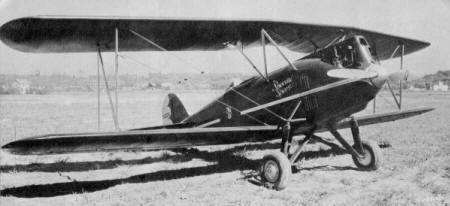
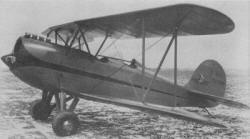
Although Hal Krier's 185 hp "Lakes" is known to airshow crowds, the Cirrus jobs
first flew in 1929.
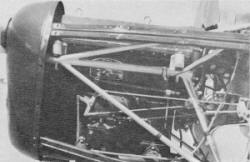
Menasco mounting, one of many.
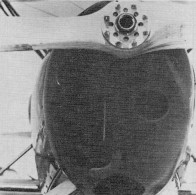 Scale buffs have plenty of intake holes
to carve. Inverted engine puts thrust high for a good trim.
But when the Great Lakes Aircraft Corp., Cleveland, Ohio, introduced its Model
2T-1 in 1929, the goal v as pilot training, not aerobatics. The boom in aviation
interest following Lindbergh's 1927 New York-to-Paris flight was on everyone's mind,
and learning to fly was becoming popular. Schools were popping up all over the country
and they needed good training planes.
And they also needed money, which was in extremely short supply once the Great
Depression hit, and learning to fly airplanes suddenly became a luxury most people
could do without, as they scraped for a liv-ing. In 1932, after producing just over
200 Trainers, the Great Lakes Aircraft Corp. went out of business. It was not until
many years had passed that its airplane achieved the level of fame for which its
developers had hoped.
The prototype Great Lakes Trainer, first shown to the public at the March, 1929,
AllAmerican Aircraft Show in Detroit, Mich., was powered by a 95-hp American Cirrus
Mark III, an upright, four-cylinder, in-line, air-cooled engine built by American
Cirrus Engines, Inc., on license from the British developer. The airplane differed
from the better-known later versions mainly in having a straight top wing rather
than the more familiar swept wing.
Tests performed on an early 2T-1 by the National Advisory Committee on Aeronautics
- predecessor of NASA - showed top speed of 106 mph; sea level rate of climb of
545 ft./min.; landing speed of 48 mph.
After four 2T-1s were built, it became apparent that, by placing the top wing
far forward and thus enabling a passenger to enter the front seat with a minimum
of dif-ficulty, the airplane had been made tail heavy. Moving the top wing back
would have made entry into the front cockpit awkward, so the center section of the
top wing was kept in place and the outer panels swept back 9 degrees into their
now familiar form. This was the 2T-1A of 1929. Part way through the production run,
the vertical tail was considerably enlarged, and those subsequently produced are
known among enthusiasts as the "Big Tail" Great Lakes.
In 1930, a new version of the Cirrus engine - the inverted, in-line Hi-Drive
- was introduced on the assembly line, and resulted in the new profile of the Model
2T-1E, with its higher-mounted propeller. Some of the 2T-1Es, last of the production
versions, were powered by the American Cirrus company's100-hp Ensign.
This was the relatively simple overall pattern of the Great Lakes Trainer, but
modifications played an unusually important role in the history of the type, even
before the post- World War II flurry of amateur redesigning completely muddied the
picture. A few of the early trainers were fitted with the Menasco B4 "Pirate," an
inverted, in-line engine of 95 hp; these were never given a full Approved Type Certificate
by the CAA and were manufactured under a special license. Others carried Kinner
engines and were known as the Model 2T-1K.
The one-and-only Model2T -2 Great Lakes was a racing version of the 2T-1A built
for and raced by Charlie Meyers, the firm's
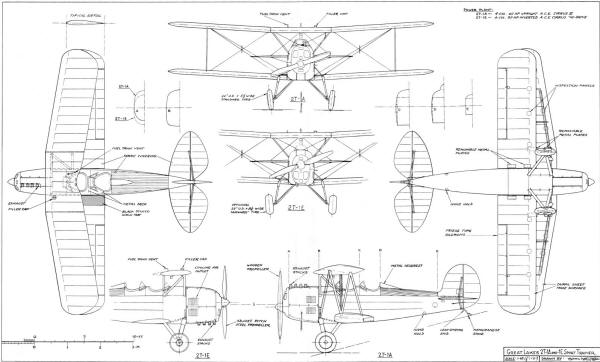 <click for larger version>
Notice:
The AMA Plans Service offers a
full-size version of many of the plans show here at a very reasonable cost. They
will scale the plans any size for you. It is always best to buy printed plans because
my scanner versions often have distortions that can cause parts to fit poorly. Purchasing
plans also help to support the operation of the
Academy of Model Aeronautics - the #1
advocate for model aviation throughout the world. If the AMA no longer has this
plan on file, I will be glad to send you my higher resolution version.
Try my Scale Calculator for
Model Airplane Plans.
Posted October 2, 2010
|